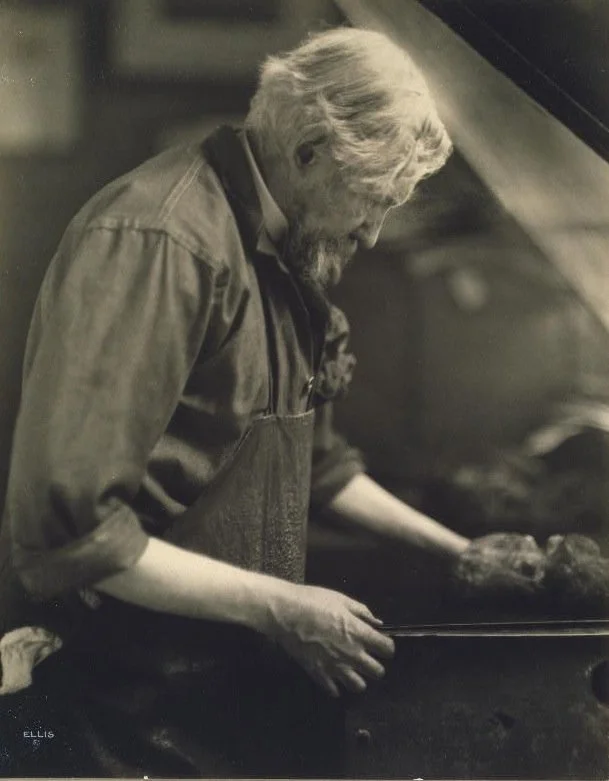Joseph Pennell - prints and biography
Joseph Pennell
Biography
Joseph Pennell (1857–1926) was an American draftsman, etcher, lithographer, and illustrator whose prolific career left an indelible mark on late 19th- and early 20th-century printmaking. Born in Philadelphia, Pennell trained at the Pennsylvania Academy of the Fine Arts before moving to Europe in the early 1880s. He would spend much of his working life abroad, creating thousands of drawings, etchings, and lithographs that chronicled the architecture, industry, and landscapes of the modern world.
Pennell was particularly drawn to cities, where monumental landmarks and burgeoning industrial sites became central themes in his work. His ability to capture both the grandeur of historic structures and the raw energy of modern industry made him one of the most sought-after illustrators of his time. Among his most notable works is Wren’s City, a print depicting Christopher Wren’s architectural legacy in London after the Great Fire. In this etching, Pennell combines a deep respect for the city’s history with his own keen eye for atmosphere, portraying London as both timeless and alive with urban presence.
Over the course of his career, Pennell traveled widely, producing prints and illustrations of cities including Venice, Rome, Paris, and New York, as well as of the Panama Canal under construction. His works often highlight the contrast between the permanence of classical architecture and the dynamism of modern engineering projects.
Beyond his visual art, Pennell was also a respected writer and educator. He collaborated with his wife, author Elizabeth Robins Pennell, on several publications, and wrote extensively about printmaking techniques and the role of the artist in modern society.
Pennell’s prints are held in major collections worldwide, including the British Museum, the Library of Congress, and the Metropolitan Museum of Art. His work continues to be celebrated for its technical mastery, documentary value, and its ability to capture both the history and transformation of the modern city.

